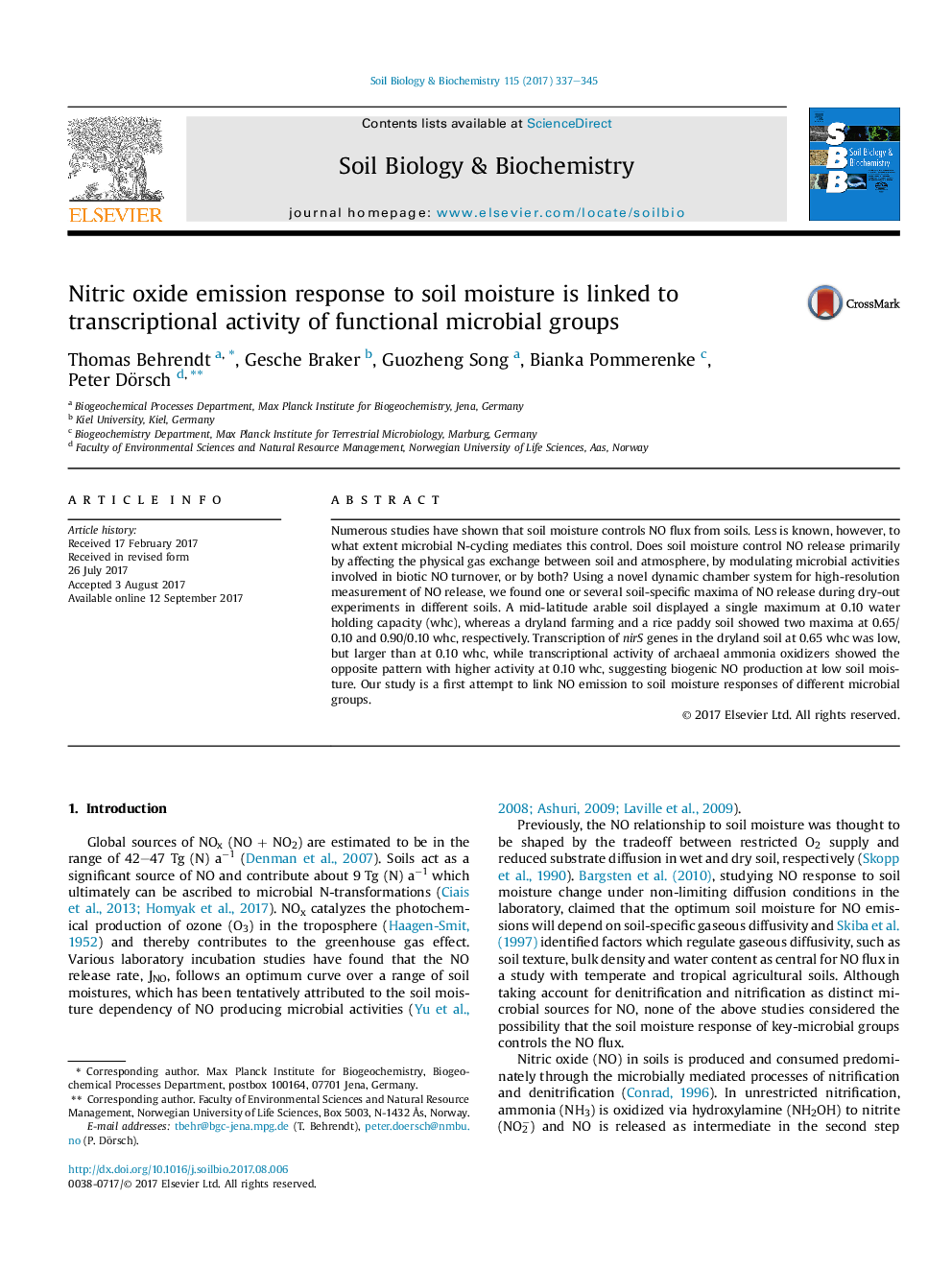| Article ID | Journal | Published Year | Pages | File Type |
|---|---|---|---|---|
| 5516254 | Soil Biology and Biochemistry | 2017 | 9 Pages |
â¢AOA lead to a maximum NO-release rate at low soil moistures in a dryland soil.â¢Niche separation for distinct microbial groups based on soil moisture occurred.â¢Niche separation might explain distinct maxima of NO emissions.
Numerous studies have shown that soil moisture controls NO flux from soils. Less is known, however, to what extent microbial N-cycling mediates this control. Does soil moisture control NO release primarily by affecting the physical gas exchange between soil and atmosphere, by modulating microbial activities involved in biotic NO turnover, or by both? Using a novel dynamic chamber system for high-resolution measurement of NO release, we found one or several soil-specific maxima of NO release during dry-out experiments in different soils. A mid-latitude arable soil displayed a single maximum at 0.10 water holding capacity (whc), whereas a dryland farming and a rice paddy soil showed two maxima at 0.65/0.10 and 0.90/0.10 whc, respectively. Transcription of nirS genes in the dryland soil at 0.65 whc was low, but larger than at 0.10 whc, while transcriptional activity of archaeal ammonia oxidizers showed the opposite pattern with higher activity at 0.10 whc, suggesting biogenic NO production at low soil moisture. Our study is a first attempt to link NO emission to soil moisture responses of different microbial groups.
